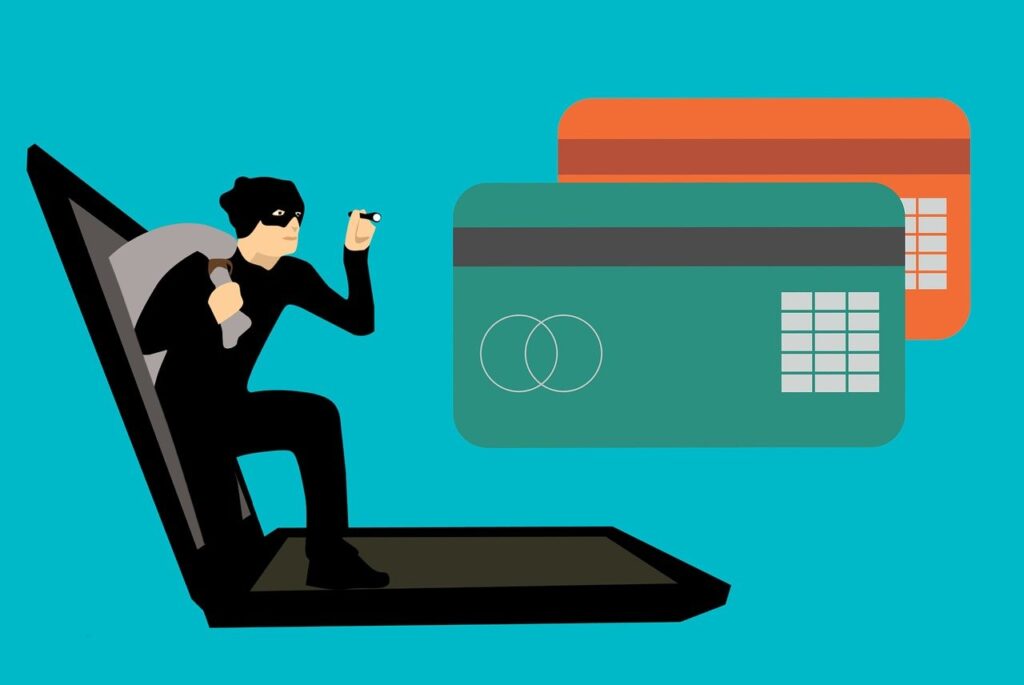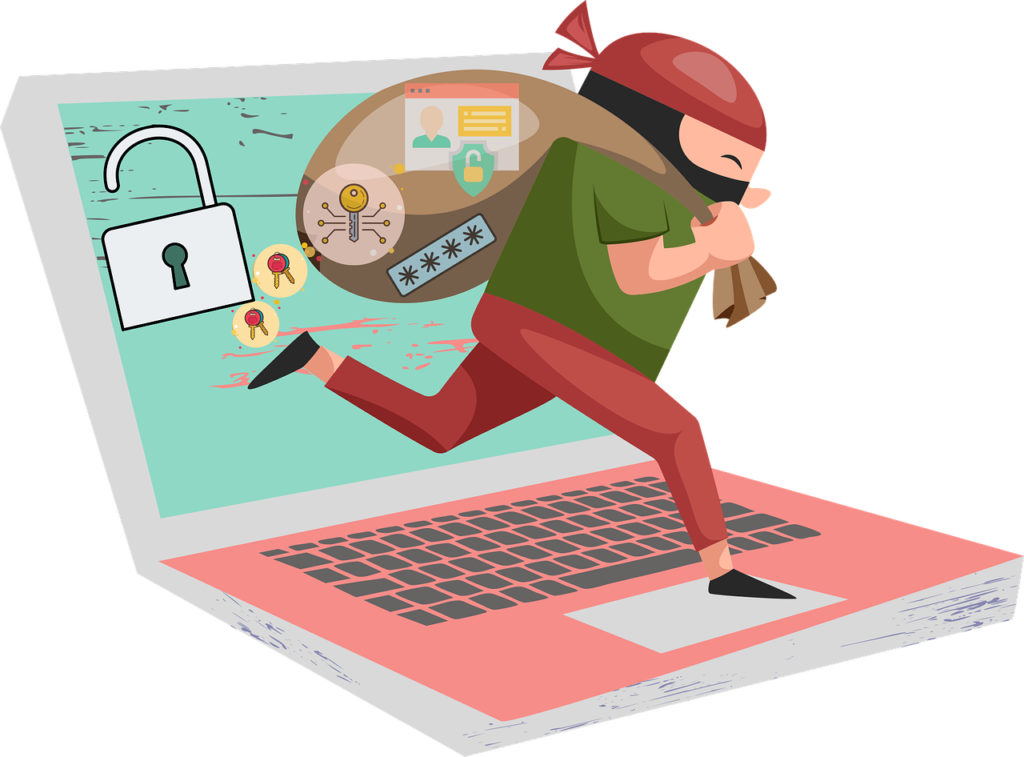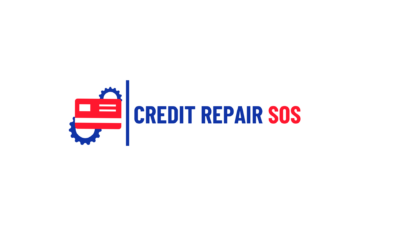
Do you want to protect your credit?
In today’s digital age, financial transactions occur at the click of a button and personal information is constantly at risk therefore, safeguarding your credit has become more critical than ever.
In this article, we’ll delve into the importance of credit protection and provide an overview of effective strategies to keep your credit safe from fraudsters and errors.
This post contains affiliate links, which means I may receive a small commission, at no cost to you, if you make a purchase through a link.
Why Do You Need To Protect Your Credit?
Your credit is like a financial fingerprint—it tells the story of your borrowing history, your responsibility with money, and your trustworthiness in the eyes of lenders.
Your credit impacts almost every major financial decision you will make in life. When seeking a loan for a house, car, or even education, lenders assess your creditworthiness to determine eligibility and interest rates.
Credit isn’t solely for borrowing; it also facilitates everyday conveniences. Landlords commonly assess credit scores for apartment rentals, while some employers incorporate credit report reviews into their hiring procedures.
Utility companies may also consider your credit when setting up service accounts. They may potentially require larger deposits if your credit is poor. By protecting your credit, you can ensure smoother transactions in these areas of life and avoid unnecessary obstacles.
Safeguarding your credit is also crucial for protecting yourself from identity theft and fraud. By taking proactive steps to secure your information, you can reduce the risk of falling victim to identity theft and the financial havoc it can wreak.
Furthermore, maintaining good credit habits can set a positive example for future generations. By modeling responsible financial behavior and emphasizing the importance of credit protection, you can instill good money habits in your loved ones and pave the way for their financial success.
Here are 15 ways to protect your credit:
1. Monitor Your Credit Reports Regularly
Regularly monitoring your credit report can detect any suspicious activity or errors. By reviewing your credit reports from all three major bureaus—Equifax, Experian, and TransUnion—you can ensure the accuracy of your credit information and quickly address any discrepancies.
You are entitled to one free credit report from each bureau annually, which you can access through AnnualCreditReport.com.
2. Sign Up for A Credit Monitoring Service
A credit monitoring service monitors your credit files for any changes or suspicious activity. This service can alert you to potential identity theft or fraudulent activity, allowing you to take immediate action to mitigate the damage.
3. Freeze Your Credit
A credit freeze, also known as a security freeze, restricts access to your credit report, making it difficult for identity thieves to open new accounts in your name.
You can freeze your credit reports with all three major credit bureaus, preventing unauthorized individuals from accessing your credit information without your consent.
To freeze your credit, you’ll need to contact each bureau individually and follow their specific procedures.
4. Set Up Fraud Alerts
Fraud alerts require creditors to verify your identity before opening new accounts or extending credit. You can place fraud alerts on your credit reports for free, and they typically remain active for one year.
By placing fraud alerts with all three major credit bureaus, you can help prevent unauthorized access to your credit information and reduce the risk of identity theft.
5. Use Strong And Unique Passwords
Creating strong, unique passwords can protect your online accounts from unauthorized access.
Avoid using easily guessable passwords or reusing the same password across multiple accounts. Instead, use a combination of letters, numbers, and special characters to create complex passwords that are difficult to crack.
6. Enable Two-Factor Authentication
Two-factor authentication requires a second form of verification, such as a code sent to your phone or email, in addition to your password. By enabling two-factor authentication on your accounts, you can significantly reduce the risk of unauthorized access, even if your password is compromised.
Many online services offer two-factor authentication as an optional security feature, so be sure to enable it wherever possible.

7. Secure Your Personal Information
Safeguarding your sensitive personal information, such as your social security number, driver’s license number, and financial account details, can protect your credit and identity.
Be cautious about sharing this information, especially online or over the phone, and only provide it to trusted parties when necessary.
Additionally, store physical documents containing sensitive information in a secure location, such as a locked filing cabinet or safe.
8. Be Cautious With Sharing Information Online
Sharing sensitive information online poses significant risks, as cybercriminals can intercept this information and use it for fraudulent purposes.
Be cautious about sharing personal or financial information on social media platforms, online forums, or other websites where it could be accessed by unauthorized individuals.
Avoid clicking on suspicious links or downloading attachments from unknown sources, as these may contain malware or phishing attempts.
9. Be Wary Of Phishing Scams
Phishing scams are a common tactic used by cybercriminals to trick individuals into revealing personal or financial information. These scams often involve fraudulent emails, text messages, or phone calls that appear to be from legitimate organizations, such as banks or government agencies.
Be skeptical of unsolicited requests for sensitive information and never provide personal or financial information in response to these requests. Instead, contact the organization directly using verified contact information to verify the legitimacy of the request.
10. Shred Sensitive Documents
Properly dispose of sensitive documents to prevent identity theft. Shred any documents containing personal or financial information, such as bank statements, credit card offers, and tax documents, before discarding them.
Investing in a cross-cut shredder can help ensure that your sensitive information remains secure and unreadable to potential identity thieves.
11. Review Bank And Credit Card Statements
Regularly review your bank and credit card statements to detect any unauthorized transactions or suspicious activity. Look for unfamiliar charges or withdrawals and report them to your financial institution immediately.
Many banks and credit card issuers also offer mobile apps or online account management tools that allow you to monitor your account activity in real time, making it easier to spot potential fraud.
12. Limit Access To Your Credit Cards
Keeping your physical credit cards secure is just as important as safeguarding your online accounts. Only carry the credit cards you need and store the rest in a secure location, such as a wallet or safe.
Avoid lending your credit cards to others or sharing your card information unnecessarily, as this can increase the risk of unauthorized charges or identity theft.
13. Opt-Out Of Pre-Approved Credit Offers
Pre-approved credit offers can be a tempting target for identity thieves, as they contain valuable personal information that can be used to open fraudulent accounts.
Opting out of pre-approved credit offers can help reduce the risk of identity theft by limiting the amount of sensitive information that is shared with third-party creditors.
You can opt out of pre-approved credit offers by visiting the OptOutPrescreen.com website or calling the toll-free number provided by the major credit bureaus.
14. Educate Yourself
Take the time to educate yourself about the latest threats and best practices for preventing identity theft. There are many resources available online, including government websites, consumer protection agencies, and financial institutions, that provide valuable information and tips for avoiding fraud.
15. Consider An Identity Theft Protection Service
An Identity theft protection service monitors your credit files for suspicious activity and alerts you to potential threats. This service may also provide identity theft insurance and assistance with resolving identity theft-related issues.
When choosing an identity theft protection provider, be sure to research their reputation, services offered, and pricing to find the best option for your needs.
Take proactive steps to protect your credit today and ensure a secure financial future for yourself and your family.
